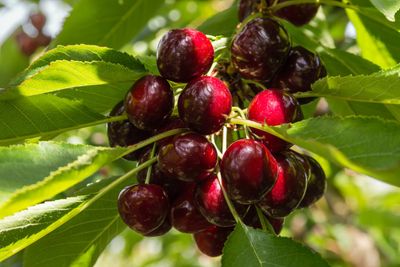About Growing Cristalina Cherries
Cristalina cherry trees were crossbred by Ken Lapins of the Canadian Summerland research station in 1967 and released by Frank Kappell in 1997. The registration rights for Cristalina cherry trees are valid until 2029. That means in order to propagate them, they must be obtained from McGrath Nurseries Ltd. in New Zealand or a licensed nursery that has obtained the rights of purchase. Cristalina cherries mature five to eight days before Bing cherries with a similar dark red-black appearance. They are firm, sweet cherries that are suitable for picking stemless. They are more split resistant than Santina cherries. These cherries are quite productive, and the tree is lovely with wide spreading branches.
How to Grow Cristalina Cherry
Before planting Cristalina cherry trees, know that they need a pollinizer such as Bing, Rainier, or Skeena. Also, sweet cherries thrive in USDA zones 5 and warmer. Next, select a location for the cherry tree. Sweet cherries bloom earlier than sour cherries and, as such, are more susceptible to frost. Select an area of high ground rather than low, which tends to frost. Cherry trees are susceptible to root rot, so be sure that the soil is well-draining as well as fertile. Choose an area of the garden that has at least eight hours of sun per day. Plant bare root cherry trees in the early spring as soon as the ground can be worked. Dig a hole that is twice as wide as the root ball and deep enough so the graft is 2 inches (5 cm.) above the soil. When planting the pollinizers, plant the trees as far apart as their mature height.
Cristalina Cherry Care
Caring for Cristalina cherry trees does require some effort on your part but is well worth it. It is a good idea to mulch around the tree in a 4 foot (1 m). wide circle to help retard weeds and retain moisture; just be sure to keep the mulch 6 inches (15 cm.) away from the trunk of the tree. Young trees should be pruned to foster scaffold branches. Thereafter, prune out any dead, diseased, or broken branches at any time they are spotted and, once a year, remove any water sprouts on the main branches and root suckers growing around the trunk. Fertilize the tree in the spring with organic compost as needed depending on a soil test.
